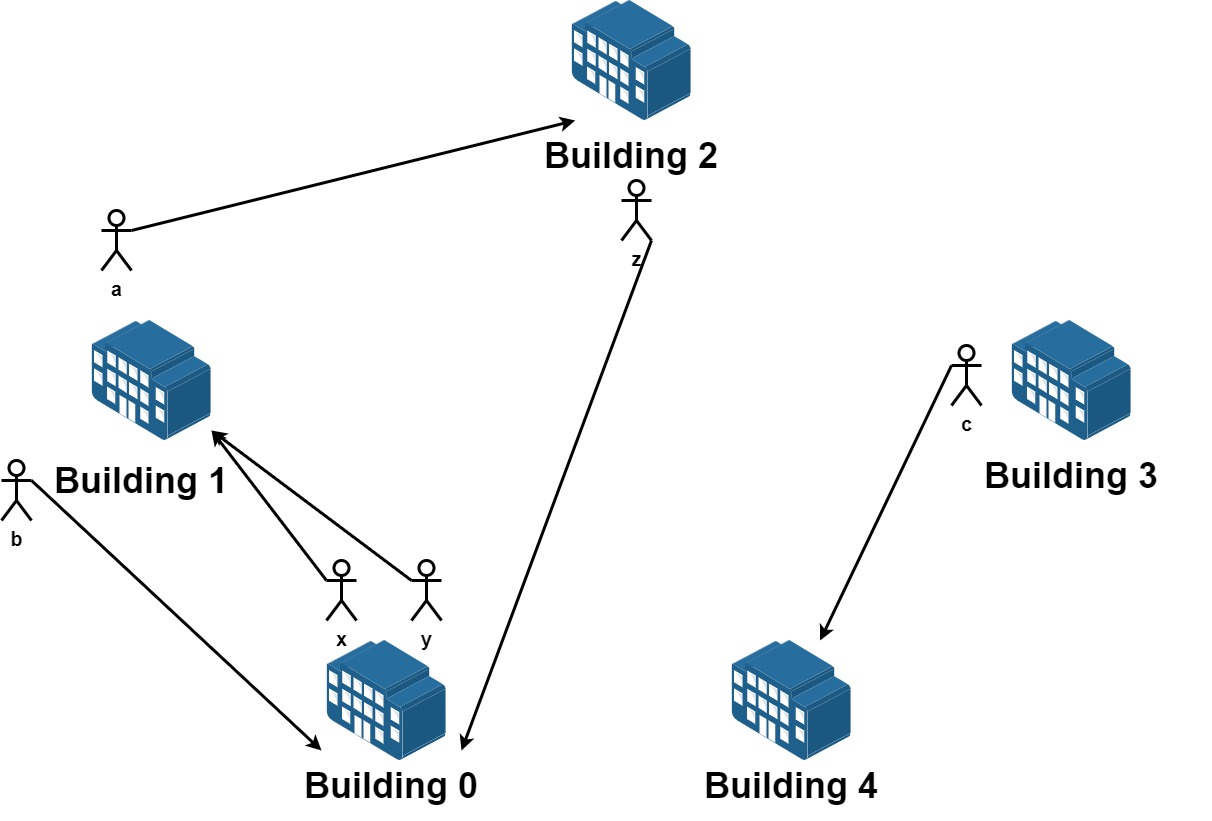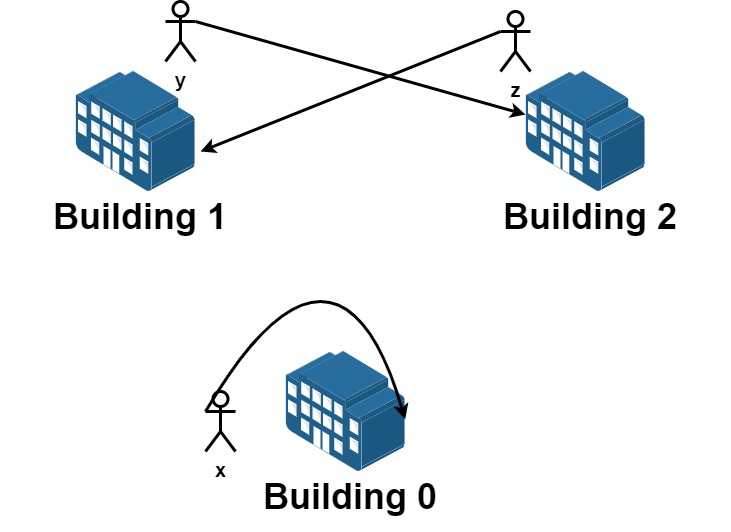本文主要是介绍1601. Maximum Number of Achievable Transfer Requests,希望对大家解决编程问题提供一定的参考价值,需要的开发者们随着小编来一起学习吧!
题目:
We have n buildings numbered from 0 to n - 1. Each building has a number of employees. It's transfer season, and some employees want to change the building they reside in.
You are given an array requests where requests[i] = [fromi, toi] represents an employee's request to transfer from building fromi to building toi.
All buildings are full, so a list of requests is achievable only if for each building, the net change in employee transfers is zero. This means the number of employees leaving is equal to the number of employees moving in. For example if n = 3 and two employees are leaving building 0, one is leaving building 1, and one is leaving building 2, there should be two employees moving to building 0, one employee moving to building 1, and one employee moving to building 2.
Return the maximum number of achievable requests.
Example 1:

Input: n = 5, requests = [[0,1],[1,0],[0,1],[1,2],[2,0],[3,4]] Output: 5 Explantion: Let's see the requests: From building 0 we have employees x and y and both want to move to building 1. From building 1 we have employees a and b and they want to move to buildings 2 and 0 respectively. From building 2 we have employee z and they want to move to building 0. From building 3 we have employee c and they want to move to building 4. From building 4 we don't have any requests. We can achieve the requests of users x and b by swapping their places. We can achieve the requests of users y, a and z by swapping the places in the 3 buildings.
Example 2:

Input: n = 3, requests = [[0,0],[1,2],[2,1]] Output: 3 Explantion: Let's see the requests: From building 0 we have employee x and they want to stay in the same building 0. From building 1 we have employee y and they want to move to building 2. From building 2 we have employee z and they want to move to building 1. We can achieve all the requests.
Example 3:
Input: n = 4, requests = [[0,3],[3,1],[1,2],[2,0]] Output: 4
Constraints:
1 <= n <= 201 <= requests.length <= 16requests[i].length == 20 <= fromi, toi < n
思路:
题目说了长度只有16,那么用dfs暴力搜索即可。另外用一个成员变量记录最大值,之后每次递归都是选或者不选。
代码:
class Solution {
public:
int maximumRequests(int n, vector<vector<int>>& requests) {
vector<int> count(n, 0);
check(requests, count, 0, 0);
return ans;
}
private:
int ans = 0;
void check(vector<vector<int>>& requests, vector<int>& count, int index, int cur) {
if (cur + requests.size() - index < ans) {
return;
}
if (index == requests.size()) {
for (auto i : count) {
if (i != 0)
return;
}
ans = max(ans, cur);
return;
}
count[requests[index][0]]--;
count[requests[index][1]]++;
check(requests, count, index + 1, cur + 1);
count[requests[index][0]]++;
count[requests[index][1]]--;
check(requests, count, index + 1, cur);
}
};
这篇关于1601. Maximum Number of Achievable Transfer Requests的文章就介绍到这儿,希望我们推荐的文章对编程师们有所帮助!





